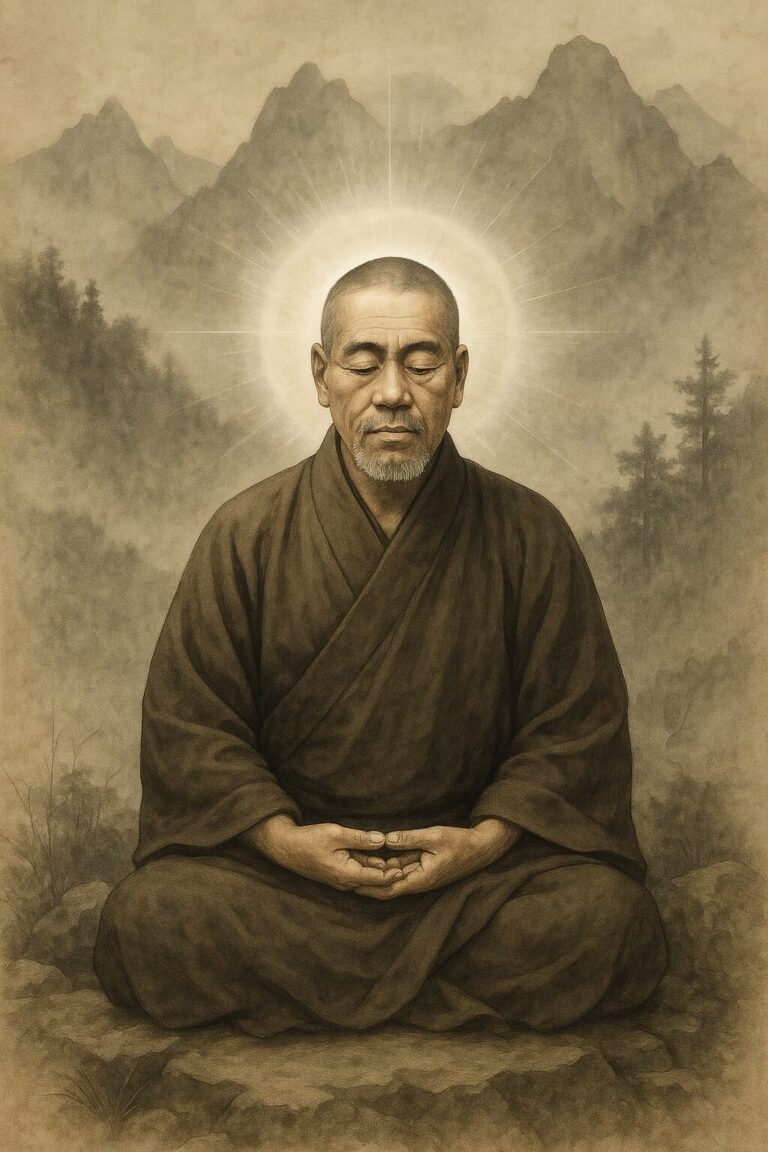- 0427 524 029
- Contact Us

The original spiritual purpose of Usui Reiki Ryōhō was to purify the mind and move towards enlightenment.
While Usui Sensei didn’t leave behind a formal, detailed curriculum on meditation (and most of what we know is through his students, like Eguchi, Hayashi, and later Takata), we do have strong evidence that he used several key meditative practices to help students cultivate spiritual awakening, or satori, rather than just focusing on hands-on healing.
Here are the main meditation techniques that Usui is believed to have used to help his students refine their mind and energy toward enlightenment:
🧘♂️ 1. Joshin Kokyū Hō (Breath of the Pure Mind)
• Meaning: “Method for purifying the mind through breath.”
• Practice: Sit in Seiza or cross-legged. As you breathe in, visualise pure light (or Reiki) entering the crown or Hara. As you breathe out, release negativity and distractions.
• Purpose: Clears the mind, centres the practitioner, and develops sensitivity to Reiki flow. A foundational spiritual practice.
• Connection to Enlightenment: Deepens awareness of ki and presence—an entry into mushin (no-mind), crucial for satori.
🌕 2. Hatsurei Hō (“Inviting the Spirit Technique”)
• Practice: A multi-part ritual including:
• Kenyoku Hō (dry bathing)
• Joshin Kokyū Hō
• Seishin Toitsu (concentration meditation on the breath or Hara)
• Reiji Hō (asking for spiritual guidance)
• Purpose: Cleansing, connecting, and aligning with Reiki daily.
• Taught by: Passed down through students like Eguchi and later restructured by Hiroshi Doi (Usui Reiki Ryōhō Gakkai line).
• Connection to Enlightenment: Used for spiritual refinement, increasing receptivity to Reiju, and preparing the practitioner to receive insight.
🌀 3. Reiji Hō (Spiritual Guidance Technique)
• Practice: A form of meditative asking—placing hands in gasshō, connecting with Reiki, and intuitively allowing the energy to guide the hands or intention.
• Spiritual Element: Cultivates surrender and trust in divine guidance.
• Connection to Enlightenment: Trains intuitive receptivity, quieting the egoic mind.
🧘♀️ 4. Gasshō Meisō (Gasshō Meditation)
• Practice: Sit with hands in prayer position, eyes closed, focus gently on the place where the middle fingers meet.
• Purpose: To still the mind, build presence, and strengthen spiritual connection.
• Often part of: Daily practice; begins most Reiki classes and meditations.
• Connection to Enlightenment: Cultivates inner stillness and mindfulness, which are central to awakening.
✨ 5. Chanting the Reiki Precepts (Gokai) as Meditation
• Recitation: In Japanese, slowly and with awareness.
• Technique: Meditate on each precept, reflecting on how to embody it in life.
• Spiritual Power: This was likely one of Usui’s core teachings—not just affirmations, but a path to refining the spirit.
• Connection to Enlightenment: Helps purify karmic tendencies and guide behaviour in alignment with universal law.
🏔️ 6. 21-Day Fast & Meditation on Mount Kurama
• While not prescribed to students, Usui’s own 21-day meditation retreat on Mt. Kurama is a prototype for deep awakening practice. It likely included:
• Chanting
• Seiza meditation
• Mantra or kotodama practice
• Silence and fasting
• Connection to nature spirits (Tengu or divine presence)
Some sources (especially from Komyo ReikiDo and the Gakkai lines) suggest that Usui viewed Reiki as a path to Anshin Ritsumei—a state of “peaceful mind established in one’s life mission,” which is a Zen-like realisation akin to satori.
🌌 Bonus: Kotodama (Sacred Sound) and possibly Mantra Work
• Some traditionalists, especially in Gakkai or Japanese spiritual circles, believe that Usui incorporated kotodama—the vibrational power of sounds (like symbol mantras)—to attune consciousness.
• While not proven, it would align with his Buddhist/Shinto influences and the esoteric teachings of Mt. Kurama.
Enjoy 🙏
#reikiaustralia #reikihealing #spiritualawakening